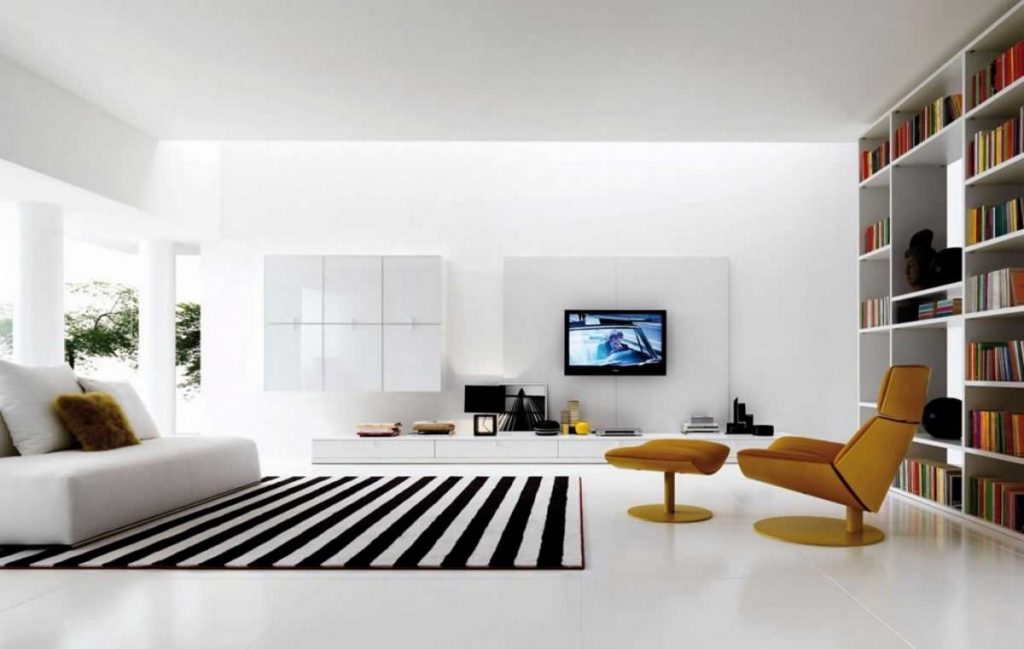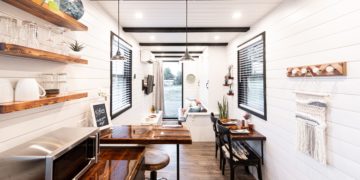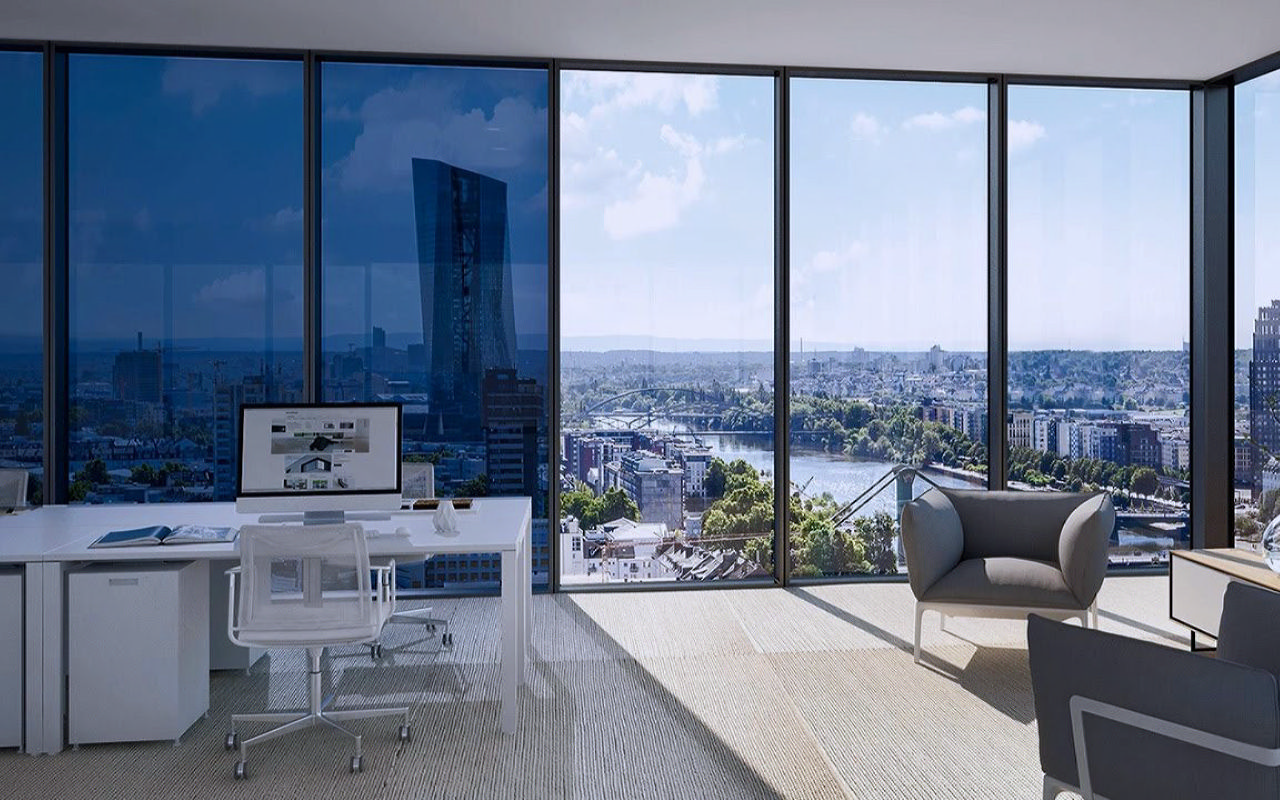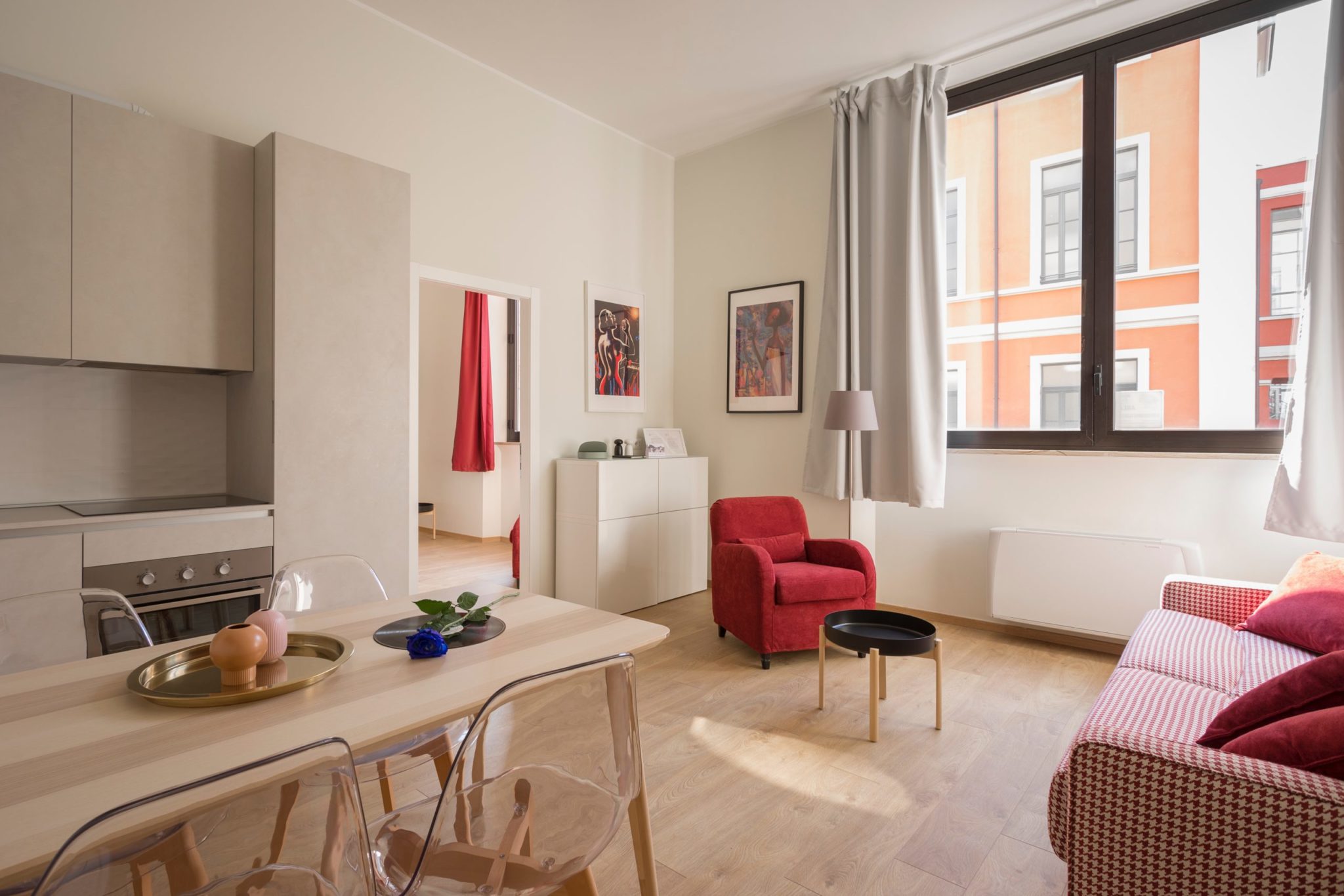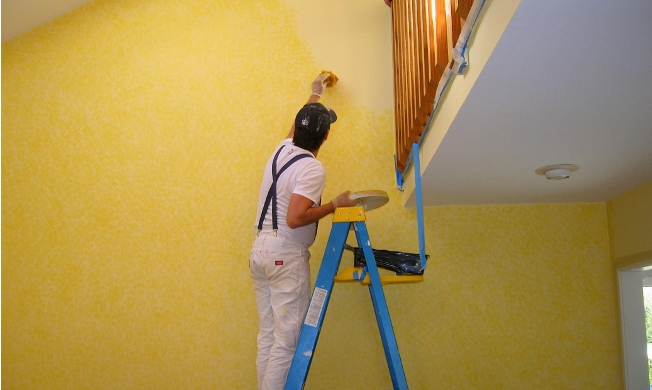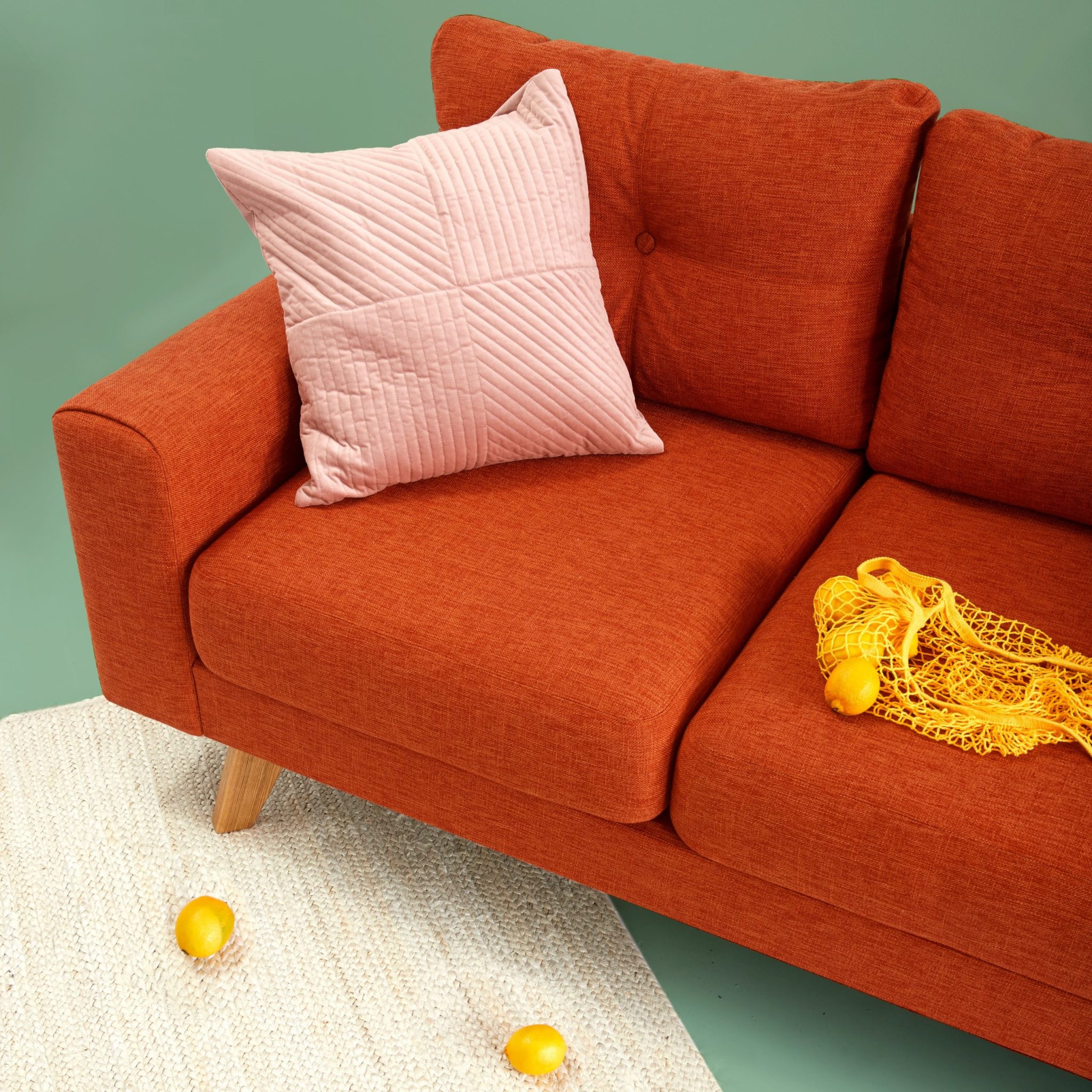Last week, we looked at the listing for a lakeside property in Bhopal. Over the next few weeks, we’ll look at each room of this property in detail to see the effects of considered design.
The Vestibule
At first glance, this vestibule appears narrow and crowded. Then you realise that it’s a wide, double-leaf door, flanked by two tall windows, so it’s definitely not narrow. What makes it appear narrow is the way it is furnished.
The curtain rods

If you have curtain rods, please hang curtains on them. They serve no decorative purpose by themselves. It’s not essential that you do have curtains for a space like this, however. As the two pictures on the right show, a vestibule like this would work with or without curtains.
The windows
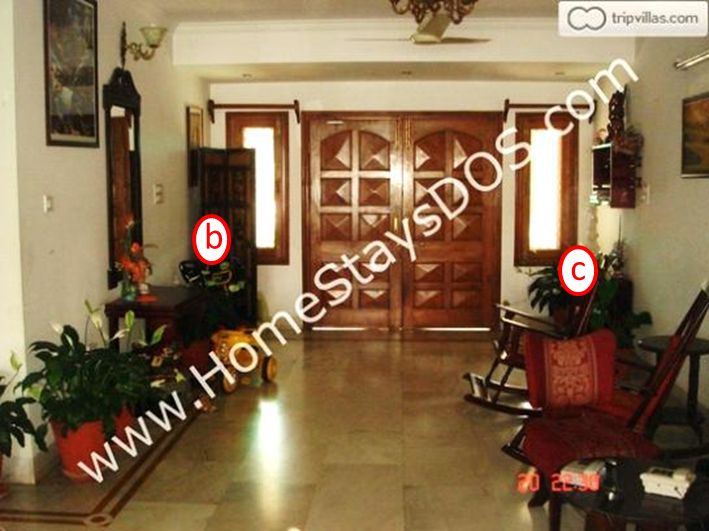
When you have two large backlit windows flanking your door, you should not be placing furniture or planters in front that block the light. This space is defined by the symmetry of double-leaf doors flanked by tall windows. If you do have to place something that blocks the light from the windows, be aware of the silhouette it presents, and make sure it’s symmetric, as in the pictures below. You could place the planters outside the windows or on the inside; what matters is that they mirror the geometry of the windows.
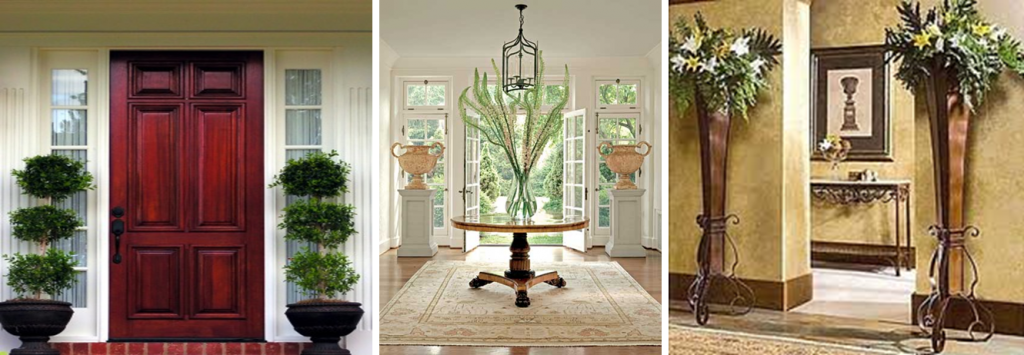
The flooring
Luxury hotels work hard on defining something they call the arrival experience, which is the guest’s first impression of the property. As you enter this property, you should feel that you’ve arrived at a worthwhile destination. One key accessory defining a space is a carpet, and as the pictures below illustrate, moving the vestibule furniture to the wall, and placing a good carpet on the floor, create impact, as well as make the vestibule seem grander.
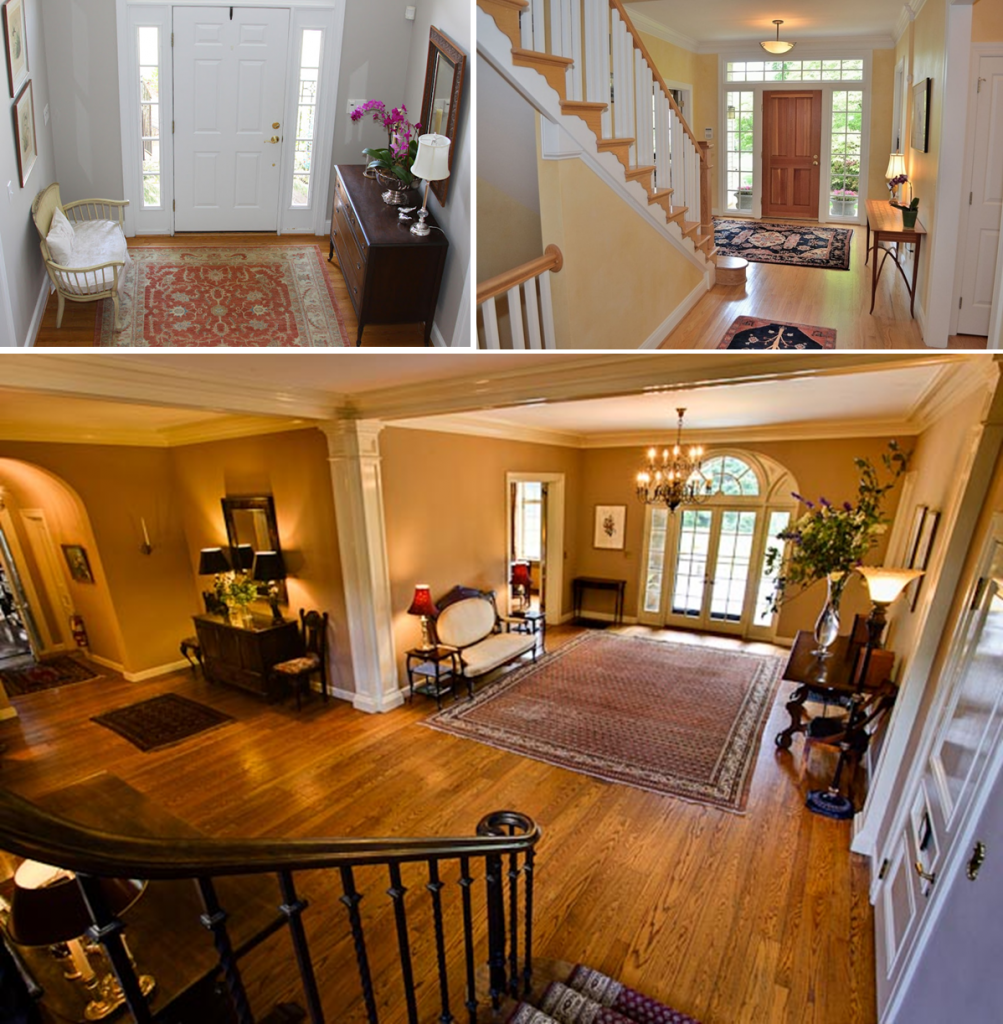
Of course, it’s not essential to use a carpet. It’s difficult to maintain carpets in many parts of India, and unless carpets are cleaned thoroughly, they can cause all sorts of allergies. An interesting accent flooring pattern, as in the images below, would serve just as well.
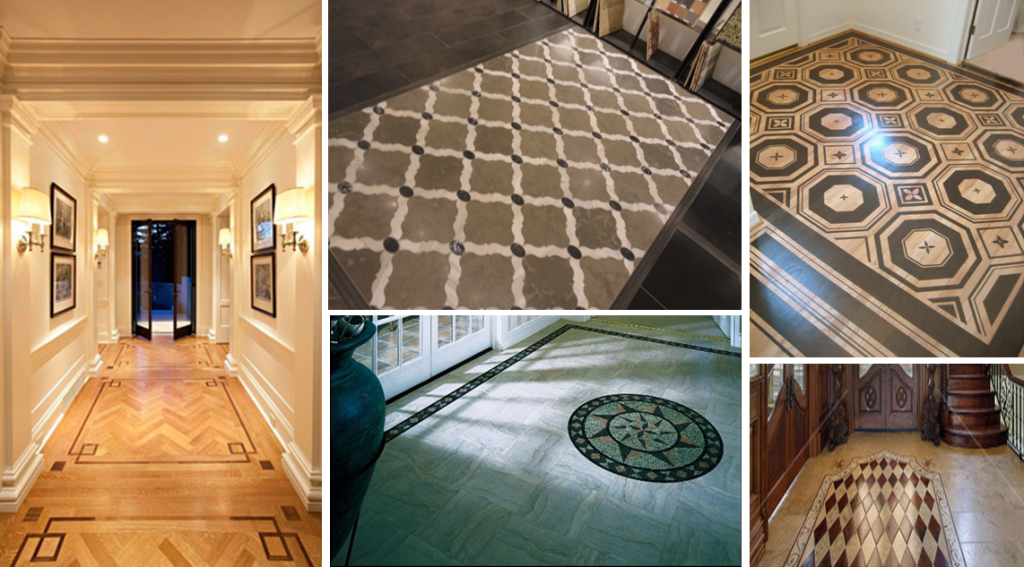
Furniture
Furniture in the vestibule can be decorative or purposeful, such as storage or seating. The size and the position of the furniture is important, to ensure that the impact of the vestibule is not diminished. Some of the ways you can use consoles, for example, are illustrated below.
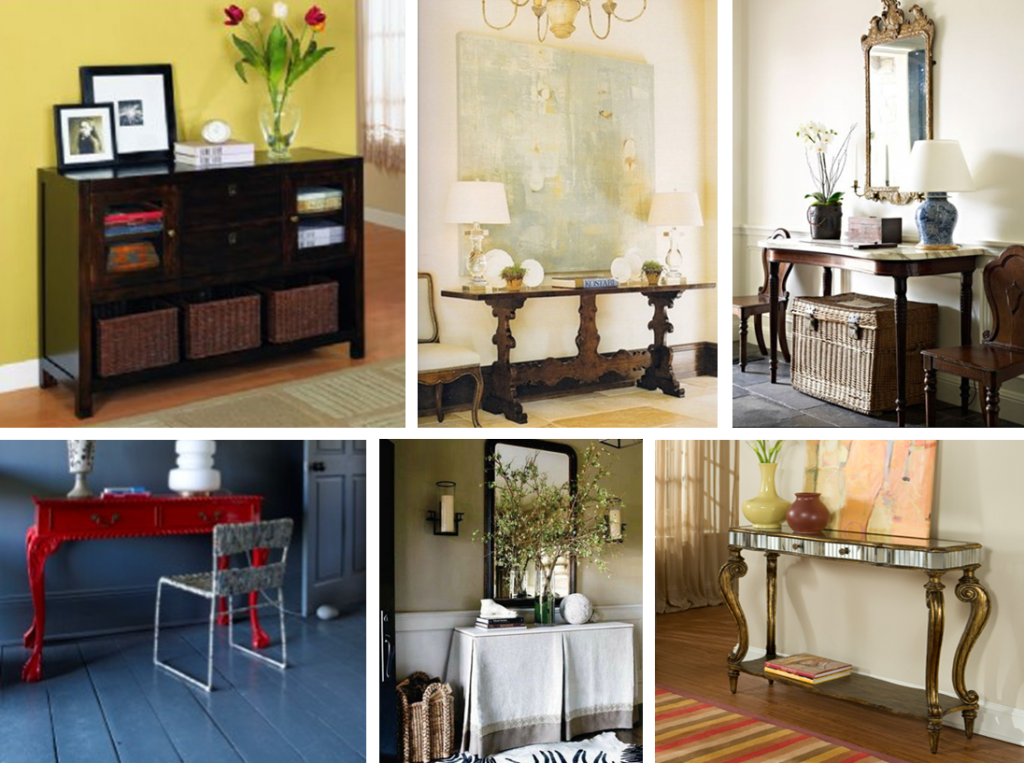
Another type of furniture common in vestibules is the purely functional – hat stands, coat hangers, shoe racks and, especially in India, UPS enclosures that allow easy access for service engineers.

Seating in the vestibule is tricky. Of course, no one actually sits in the vestibule for long periods of time, so vestibule seating is mostly ornamental. In the Indian context, we can assume that people would sit for short periods, for example, when taking off or putting on their shoes. Some of the ways one can use seating in the vestibule are demonstrated in the picture array below.
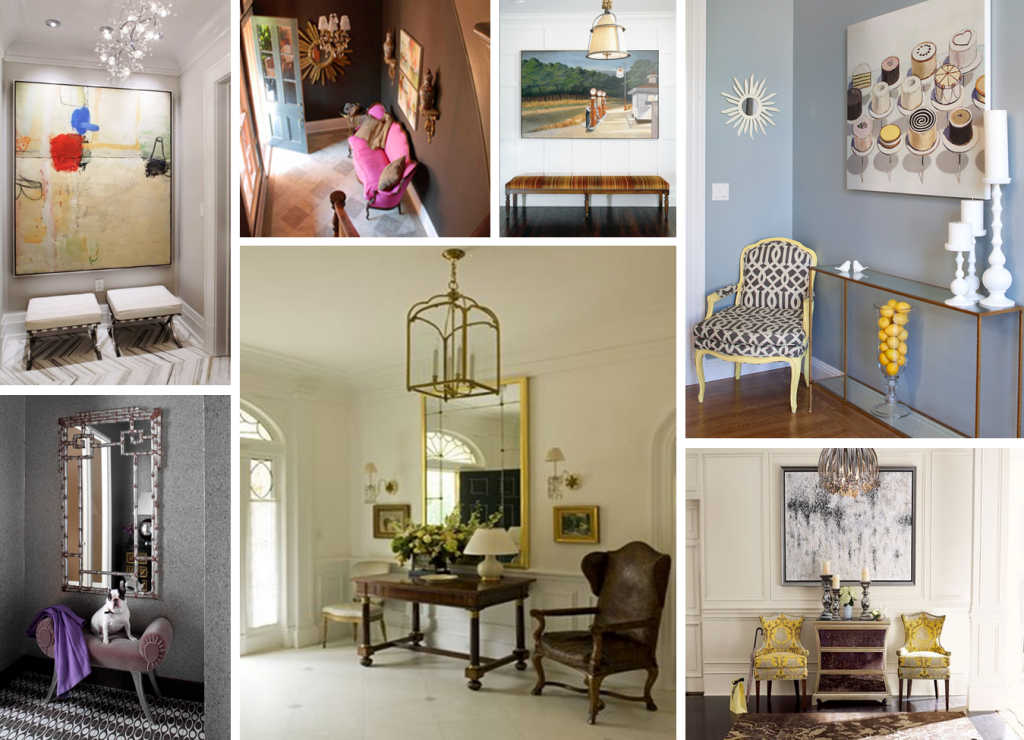
Displaying art in the vestibule can be done as detailed in our earlier stories here. In this property, art is placed randomly, without any assessment as to its impact, as shown here.
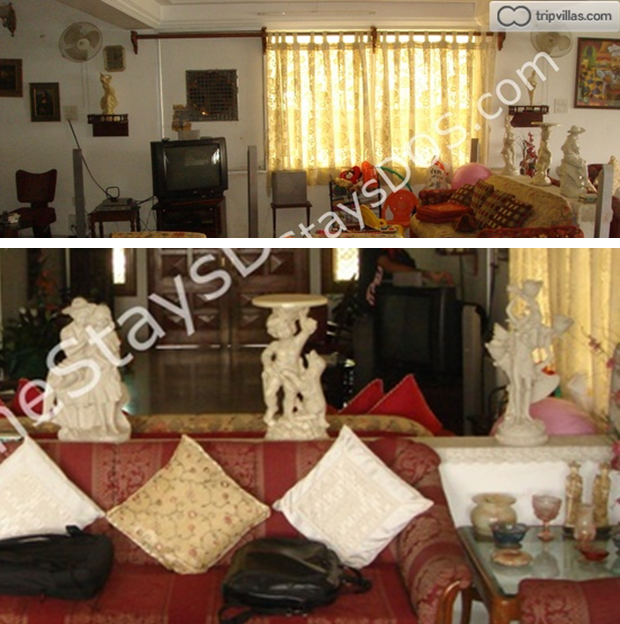
Contrast this with how similar collections are placed in the following pictures.
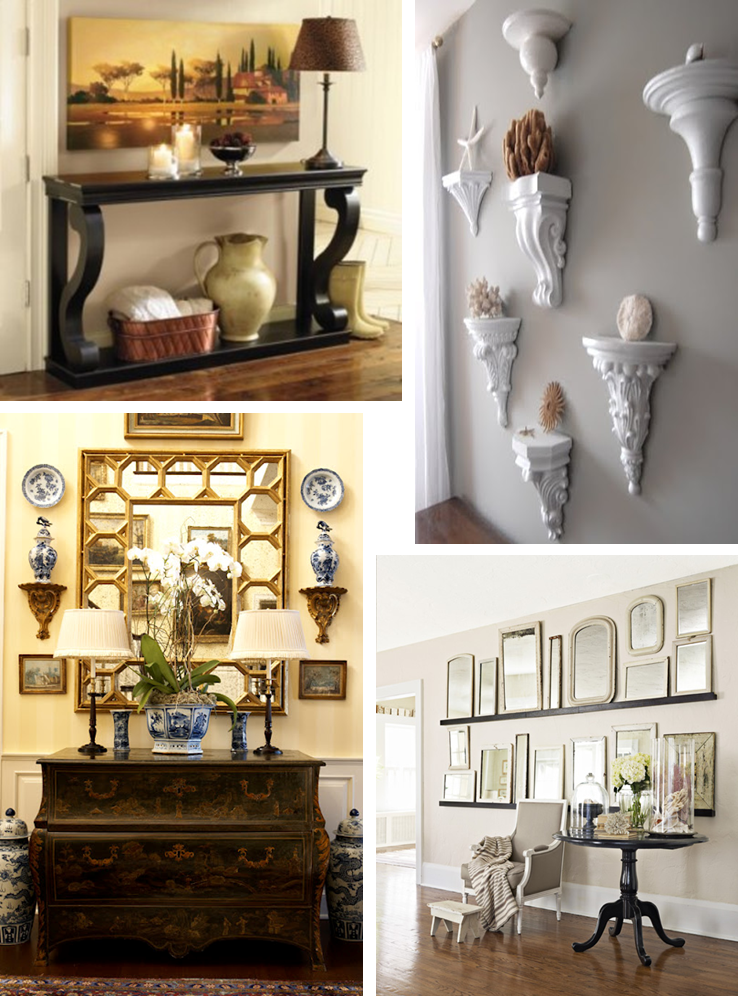
Next week, we’ll look at this property’s living and dining rooms, and see how those spaces can be optimized.
To get more information & assistance, please submit the form below and our specialist will get in touch with you at the earliest.

